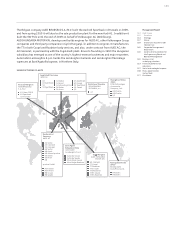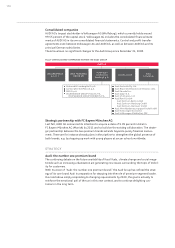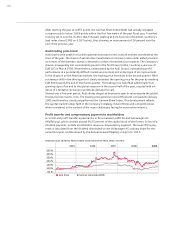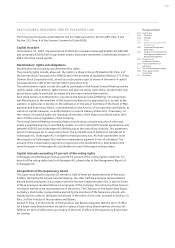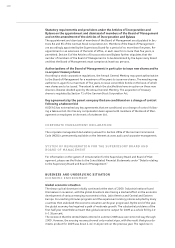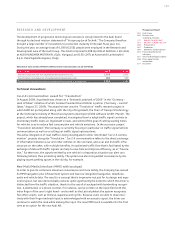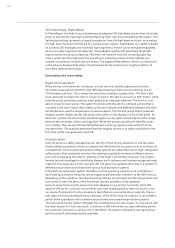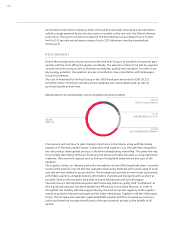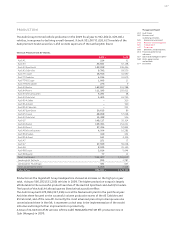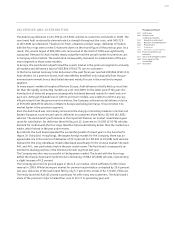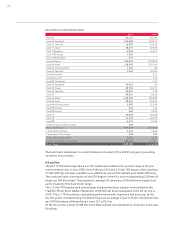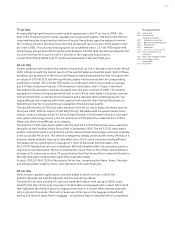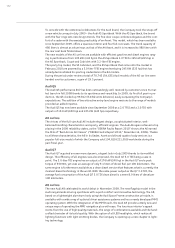Audi 2009 Annual Report Download - page 145
Download and view the complete annual report
Please find page 145 of the 2009 Audi annual report below. You can navigate through the pages in the report by either clicking on the pages listed below, or by using the keyword search tool below to find specific information within the annual report.
142
In Latin America the Brazilian car market continued to advance despite the global economic
crisis. Sales of passenger cars there exceeded the previous year’s tally by 12.8 percent, to reach
2.5 million vehicles. On the other hand the overall car market in Argentina of 378 thousand
passenger cars shrank by 11.8 percent.
The rate of growth in the Asia-Pacific region again increased sharply in 2009. The sales volume
there climbed by 19.7 percent to 17.5 million passenger cars in total. Especially in China, state
aid promoted the expansion of the car market with the result that the sales figures rose by 53.9
percent to 8.5 million passenger cars. The Indian car market, too, benefited from a further rise
in demand and gained 17.3 percent to reach 1.4 million vehicles. The market in Japan neverthe-
less remained weak. New car registrations were down 7.2 percent to 3.9 million units.
German car market
The German auto market experienced a special boom in 2009, with new registrations growing by
23.2 percent to 3.8 million passenger cars. The main factor at work here was the government
environment bonus for private customers. Between February and November 2009 it prompted
monthly growth in new car registrations in the double-digit range. The structure of the market
was simultaneously transformed, with the proportion of private registrations soaring from 40.2
percent in the previous year to 62.7 percent in 2009, while new registrations for commercial use
fell because of the economic crisis. The main players to benefit from the surge in private de-
mand were manufacturers of small and mini cars as well as vehicles in the compact size cate-
gory, which enjoyed a sharp increase in their market shares.
The diesel share of total registrations fell significantly by 13.4 percentage points in the year
under review to 30.7 percent as a result of higher sales to private customers, who wanted pri-
marily gasoline models. By contrast, the diesel share of commercial new registrations
remained largely stable.
Vehicle exports by German manufacturers suffered a sharp downturn of 17.1 percent to 3.4
million units in 2009 due to the global economic crisis. Deliveries of vehicles to the key export
region of Western European countries fell by 13.2 percent to 2.1 million passenger cars. With
an export volume of just 359 thousand passenger cars, exports to the United States were down
by a total of 31.3 percent.
The sharp drop in export demand was mirrored by lower domestic production output by German
car manufacturers in 2009. The production volume of 5.0 million passenger cars was 10.3 per-
cent down on the prior-year figure. The number of German-brand cars built abroad was down
8.3 percent on the previous year at 4.8 million units.
Management’s overall assessment
The global economic crisis and the associated collapse in numerous car markets in the past fiscal
year presented the automotive industry with one of the biggest challenges of recent decades.
Despite the extremely difficult economic environment, the Audi Group held its ground very well
throughout the crisis thanks to its excellent ability to compete.
The long-term corporate policy yet again paid dividends, because firstly it focuses on progres-
sively optimizing processes and cost structures along the entire value chain, and therefore on
permanently improving productivity. The second success factor is the methodical way in which
the product range is being expanded. Thanks to its fresh and attractive model range, with mod-
ern, efficient engines, the Company pulled through a crisis-ridden 2009 very successfully; deliv-
eries of 949,729 (1,003,469) vehicles of the Audi brand were only 5.4 percent down on the
record level achieved one year earlier. The Audi Group’s crisis-proof constitution is also reflected
in the clear operating profit of EUR 1.6 billion and an operating return on sales of 5.4 percent.
The Audi Group was thus again one of the most profitable car manufacturers in the world in the
past fiscal year.



